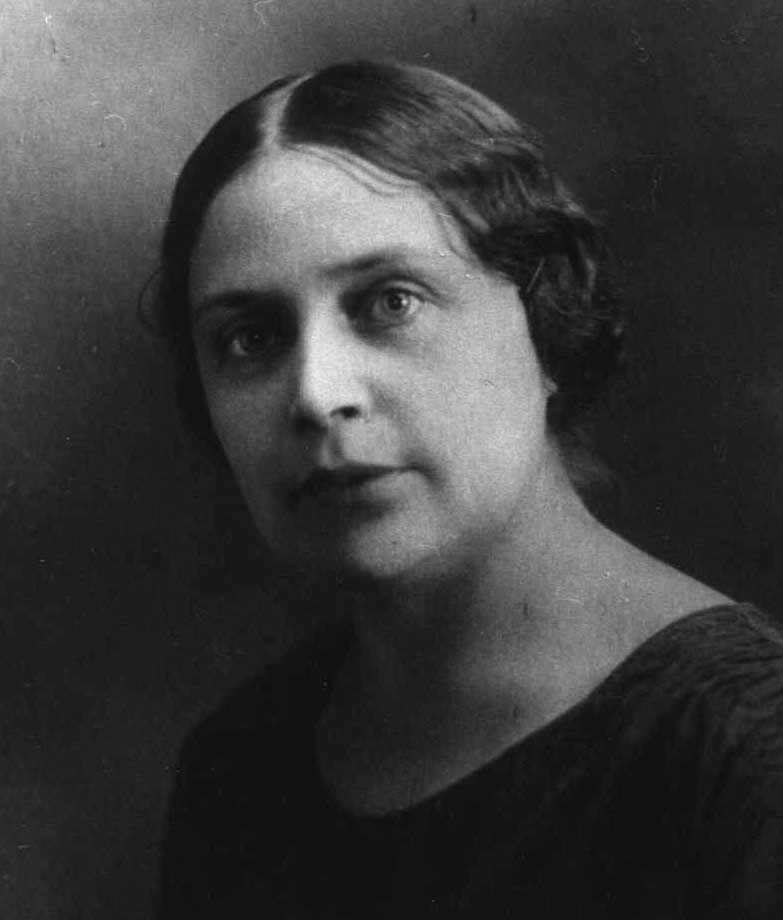Vera Nikolaevna Bondartseva-Monteverde was born on 28 February 1889 in St Petersburg into the family of Nikolay Avgustinovich Monteverde, Principal Botanist of the Imperial Botanic Garden in pre-revolutionary Russia, later on a member-correspondent of the Academy of Sciences of the USSR. Her grandfather, Agustin Monteverde, descendant of the aristocratic Canary family, came to Russia in 1821 to serve in a group of Spanish engineers and finished his career as a Lieutenant-General in the Russian military. After private college Vera Nikolaevna continued her education on High Women Bestuzhevskye courses, where she studied biology. That time she was already acquainted with her future husband, Apollinariy Semenovich Bondartsev, and under his influence and his guidance began to specialize in mycology. After graduation in 1914 she came to work to the Department of Plant Pathology of the Imperial Botanic Garden. At the same year she married A.S. Bondartsev.
The circumstances of her official career were not favourable. Beginning her job in 1914 from the lowest level, in 1918 she was transferred to the post of researcher, and in 1924 became an assistant. At the end of 1930 in connexion with the union of the Department of Plant Pathology with the Institute of Cryptogamic Plants, she lost her job. The official reason pretext was "staff reduction". From that time and practically to the end of her career and life she needed to change her place of work frequently. In 1931 she worked on contract with the All-Union Institute of Plant Protection and finished the investigation on Ascochyta on peas that was begun in the Botanical Institute. During 1932 she worked in staff of the Department of the Service of Plant Pests and Diseases Control, but at the end of the year the organisation was shut. From 1933 to 1935, she served as senior specialist - plant pathologist of Leningrad [St Petersburg] quarantine inspection. In 1935 V.N. Bondartseva-Monteverde was conferred with the degree of candidate of biological sciences. From 1937 and till the beginning of the second world war she worked on contracts with the Department of Cryptogamic Plants of the V.L. Komarov Botanical Institute treating some genera of imperfect fungi for the key book of this group. In April of 1942 during the seige of Leningrad [St Petersburg], she was included in staff of V.L. Komarov Botanical Institute as researcher of the Department of Cryptogamic Plants and in February of 1944, five months before the death, at last transferred to the post of senior researcher. During the seige, she divided with her husband and another citizens all the difficulties of the situation - hunger, danger, cold, working in summer in vegetable garden, watching the bombs on roofs of the Institute buildings, nursing the wounded servicemen in military hospital, helping to the friends and collaborators as much as she could. For her activity during the war period she was decorated with the medal "On defence of Leningrad". She died on cancer on 30 July 1944.
In spite of such arduous career she never lost courage and interest in her science. During the first years of her activity she participated in many expeditions to the different regions of the European Russia, Crimea and the Caucasus, collecting much, preparing lists of microfungi, describing new species. Later on she continued to identify collections of fungi and was an authority on systematics of parasite micromycetes. When working in Quarantine inspection V.N. Bondartseva-Monteverde investigated the green houses of the V.L. Komarov Botanical Institute and the impressive list of species of parasite fungi was a result of the work (with two co-authors), including 26 species new to science. She was a brilliant experimentalist and knew well both the methods of pure cultures and that ones of artificial inoculation of plants. The excellent knowledge of three foreign languages (English, French, German) permitted her to be in course of the new publications. Among her experimental works the most interesting ones are the investigation of Phytophthora infestans (Mont.) De Bary and some other pathogens on tomatoes, Ascochyta pathogens of peas and another leguminous plants (last ones with N.I. Vassilievsky). She was a main co-author of Key book of parasite fungi on Gramineae in the BSSR published in 1938. The second volume of the edition, dedicated to the parasite fungi on leguminous plants, was prepared to the publication and sent to Minsk at the beginning of 1941. The publication was delayed in Minsk for unknown reasons and the text was later lost when the town was occupied. After the death of the main author (V.N. Bondartseva-Monteverde) to reconstruct the book became impossible. The whole list of publications of V.N. Bondartseva-Monteverde includes 28 titles, among those none small or insignificant. The last great work of V.N. Bondartseva-Monteverde, a monograph of Ascochyta wa left unfinished.
Vera Nikolaevna was very noble, kind-hearted, modest person, with the wide interests concerning not only a science, but also literature, fine arts, theatre. Nevertheless the most important her feature was adherence to the principles and faithfulness to the friends. Their house always was open to friends independently of their circumstances to that moment and they both with her husband made much to those who survived hard times.
Lists. Publications. Taxa. Kirk & Ansell form of name: Bond.-Mont.
